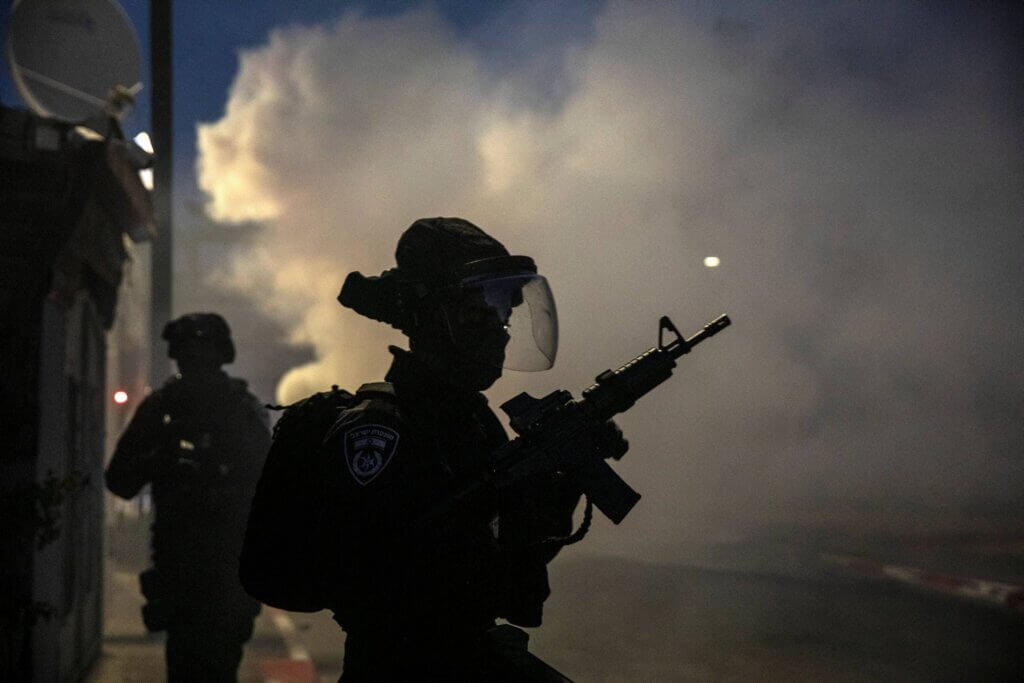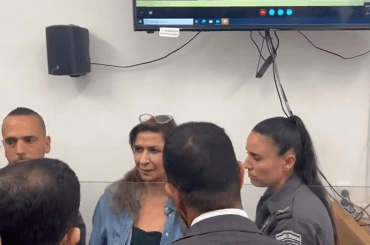Palestinian citizens in Israel have been protesting in recent days against Israeli oppression in Jerusalem. They protest the displacement and dispossession of Palestinians from Sheikh Jarrah, the attack on worshipers inside the Al-Aqsa mosque, police attempts to prevent Palestinian citizens from praying in the mosque during Laylat Al-Qadr, and the brutal onslaught on Gaza.
The Israeli media is concerned about these developments. This morning, Roni Daniel, the veteran Israeli TV security correspondent, insisted the Palestinian citizens’ behavior is more concerning than what is the confrontation with Hamas. The army will deal with Hamas, he assured the listeners, but the question of riots inside Israel is much more serious, he repeated, rebuffing the anchor’s attempts to ask him about Gaza.
Across the board, Israeli media is alarmed at the collapse of “co-existence” in the “mixed cities” inside Israel, Lydda, Ramleh, Jaffa, Acre, and Haifa. In Lydda, the mayor called for bringing in the military to the city against his own citizens. The government acquiesced: it declared an emergency and imposed a lockdown on the city.
The reality of settler colonialism, of Judaizing Palestine, is present in Lydda as much as in Sheikh Jarrah. The ideology behind both is similar. The political forces are even the same.
Yet it is hard to take this invocation of a lost coexistence seriously. The reality of settler colonialism, of Judaizing Palestine, is present in Lydda as much as in Sheikh Jarrah. The ideology behind both is similar. The political forces are even the same.
In 2004, for instance, Haaretz reported about a “settlement inside Lydda”, referring to a group of West Bank religious settlers who moved to Lydda to prevent “Arab control”.
This was not merely a case of private residents moving into the city. In 2003, The Israel Lands Administration granted the Kiryat Eliyashiv association, who was the only bidder in a tender, six dunams of land effectively for free (seven New Israeli Shekels per housing unit!)
These settlement efforts to change the “demographic balance” between Palestinians and Israeli Jews are a manifestation of an apartheid policy: the leaders of the religious settlers group were clear early on that no Arab can get an apartment in Ramat Eliyashiv neighborhood. Jews Only!

In 2015 the Walla website reported further on this reality of segregation in Lydda, Ramleh, Jaffa that separates between neglected Arab ghettos suffering from poverty and crime and the wealthy Jewish neighborhoods
This segregation is present in walls separating Arab and Jewish neighborhoods in Ramleh and Lydda.
In Lydda, a wall of more than 4 meters high, 1.5 km long separates between the Arab Pardes Shnir and the Jewish Nir Zvi.
In Ramleh, a wall 4 meters high, 2 km long separates between the Arab Jawarish and the Jewish Ganei Dan.
Segregation is also apparent in the existence of the unrecognized village Dahmash. The newly founded and wealthy Jewish neighborhoods are well-equipped. Yet, the 70+ years old Dahmash is under constant threat of demolitions (see here). As an unrecognized village, it lacks the basic services such as electricity and running water. Yesterday, a rocket killed two Dahmash residents. This incident further highlighted the vulnerability of Palestinian citizens. They had no shelter available.
Lydda’s far-right mayor (a Kahanist, the media calls him) has also been contributing to segregation by freezing building permits in order to prevent Arab residents from moving to Jewish neighborhoods.
The Kahanists and Lahava organization, who had marched in Jerusalem chanting deaths to Arabs only days ago, descended to Ramleh and Lydda. Hundreds of these extremists attacked Arab citizens in Ramleh.
Itamar Ben Gvir, now a member in the Knesset, called in Lydda for shooting any stone thrower.
The minister of internal security Amir Ohana has already determined that the Jewish citizen who shot an Arab protester, Musa Hassouna, from a 50 mt distance acted in self-defense, and that Jewish private citizens with guns are helping the police! Following this political pressure, the police who had initially detained the shooter, released him a day later. Private violence against the Palestinian citizens is thus encouraged and sanctioned by state authorities.
The reality thus is one of settler-colonialism in which private and public powers are acting in concert to Judaize the land and unleash violence in historic Palestine, from the river to the sea.
It is a fiction therefore to argue that there is any “co-existence” or that there are “mixed cities” inside Israel. It is a reality of ghettos and apartheid: an ongoing colonial project of Jewish supremacy.
It is a fiction therefore to argue that there is any “co-existence” or that there are “mixed cities” inside Israel. It is a reality of ghettos and apartheid: an ongoing colonial project of Jewish supremacy. Jim Crow was not a project of co-existence.
It is also misleading to label Israel as a “liberal democracy” or simply as a “deeply divided society”. Against the backdrop of the lack of equal protection clause in the Israeli bill of rights, and the Admission Committees Law (2011) which allows the exclusion of Palestinian citizens from living in hundreds of localities, the Basic Law: Israel as the Nation State of the Jewish People (2018) merely constitutionalizes Jewish supremacy.

There is an irony then, that until recently the apartheid analogy or legal categorization of the crime of apartheid was used in reference to the West Bank. Yet, one of Palestinians’ early invocation of apartheid was in reference to the colonial reality prior to 1967. Fayez Sayegh in his 1965 book “Zionist Colonialism in Palestine” (PDF) made the analogy to the South African apartheid before the 1967 occupation and within the settler colonial framework.


